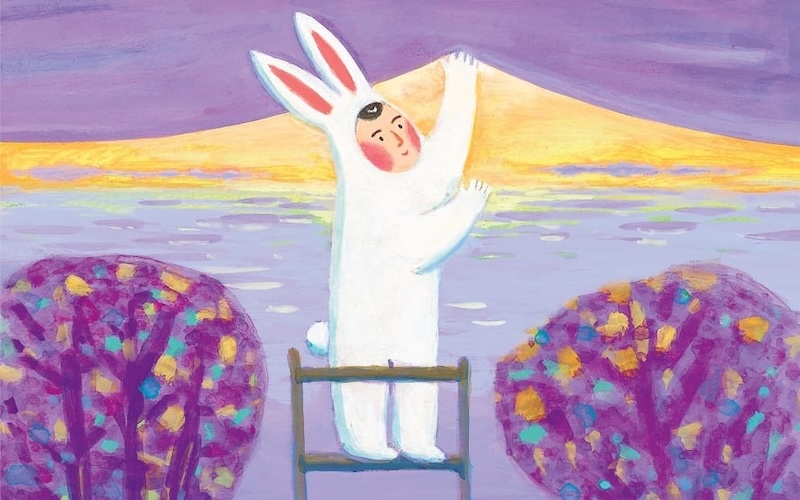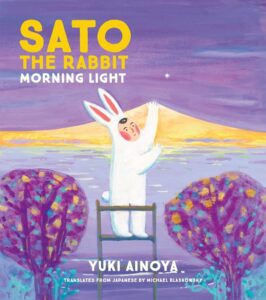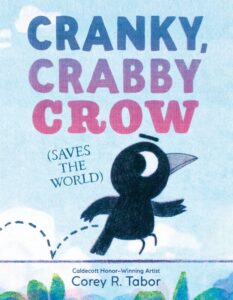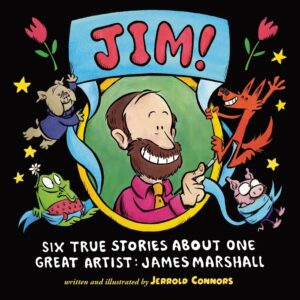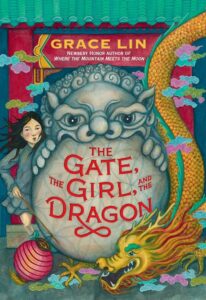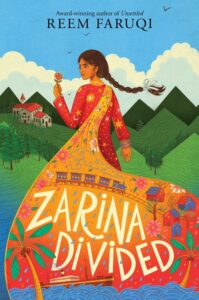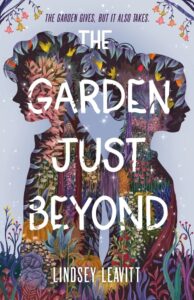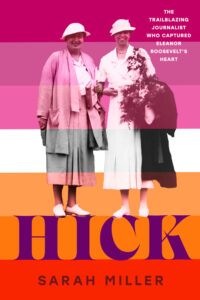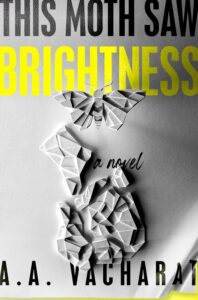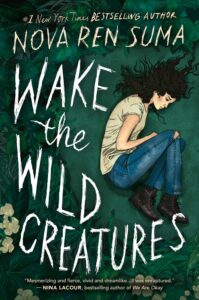As children’s books have faced recent bans in schools and libraries, and even come up for comment in a case before the Supreme Court, I’ve been thinking about how powerful the books we give to our children can be. They can teach readers about historical events they’ve never experienced, countries they haven’t visited, and lives they haven’t lived; they can spark a young person’s interest in anything from cooking to mythology to space exploration. Many adult readers can point to books from their own childhoods that changed them forever, shaping their understanding of the world or setting them on a lifelong path of fascination and discovery.
It’s easy to see how objects with this kind of life-changing power can be frightening to some adults, but I want to offer them a different perspective: Books help children grow into creative, complex, and well-rounded thinkers. Those of us who write for young people try not to indoctrinate our readers but to expand their universe and give them the intellectual and emotional tools they’ll need to explore it. In that spirit, I’m offering up ten books for young readers publishing this month that taught me something new, expanded my own universe, or helped me think about the world I know in an unexpected way.
*
Yuki Ainoya, trans. Michael Blaskowsky, Sato the Rabbit, Morning Light (Sato the Rabbit #4)
(Enchanted Lion, May 6)
Recommended for ages 4-7
My favorite picture books to read aloud to my own kids at the end of the day are the quiet, meditative ones—the ones with beautiful artwork to slow my heartbeat and gentle text to calm my nerves. To my surprise and delight, my kids seem to love this kind of book as much as I do, so I can’t wait to share the entire Sato the Rabbit series with them. Originally published in Japan, Sato the Rabbit, Morning Light follows a child-turned-rabbit on his perfectly surreal adventures: stirring coffee with a beam of light, roasting stars and mushrooms over a campfire to make a sandwich, bobbing on the ocean in a floating lighthouse, and opening a seashell to reveal a sunset. Any reader who wants to travel for a moment to a magical and peaceful world will find a refuge here.
Corey R. Tabor, Cranky, Crabby Crow (Saves the World)
(Greenwillow Books, May 6)
Recommended for ages 4-8
Crow is rude to everyone. He caws at Squirrel, rebuffs Hummingbird’s advances, and earns a lecture from Cat about the thoughtless way he treats the other animals who dare to climb up to his telephone wire. But just when you think you’ve settled into a predictable moral tale of an animal who learns a lesson in kindness, a red telephone rings, and this delightfully surprising narrative blasts off—literally—as Crow’s secret mission commences. Written and illustrated by Caldecott Honor-winning creator Corey R. Tabor, Cranky, Crabby Crow (Saves the World) is a great choice for families looking to switch up their usual read-aloud fare. Newly independent readers will get a chuckle from reading it on their own, too.
Jerrold Connors, Jim! Six True Stories about One Great Artist: James Marshall
(Dial, May 20)
Recommended for ages 5-8
Since the 1970s, young readers have had the pleasure of meeting two hippos named George and Martha, a fox named Fox, a mean teacher named Viola Swamp, and other characters from the ingenious brain of artist and writer James Marshall. Now today’s kids (and nostalgic adults) can enjoy this wonderful biographical picture book tribute to Jim, written and drawn by Jerrold Connors in the style of Marshall’s own work. In Connors’ capable hands, Jim becomes a character (a fox, actually) in his own series of six short stories about important events in his life, like working on the book Miss Nelson is Missing, palling around with Maurice Sendak and Arnold Lobel, and meeting his longtime partner, Billy. The tender last chapter touches on Jim’s death from AIDS in 1992. Backmatter based on Connors’ extensive research gives readers more information about Marshall’s life. Kidlit lovers: you need this book.
Grace Lin, The Gate, the Girl, and the Dragon
(Little, Brown, May 6)
Recommended for ages 8-12
Like her Newbery Honor title Where the Mountain Meets the Moon, author and illustrator Grace Lin’s new book combines mythology, adventure, loveable characters, and atmospheric artwork in a middle grade novel that should be a big hit with readers. It’s about Jin, a mythical Stone Lion cub whose big athletic dreams go awry when he accidentally knocks the Sacred Sphere that his family is supposed to protect into the realm of humans. When Jin runs through the Old City Gate in pursuit of the sphere, he gets trapped in the human world, where he has to seek help from new friends to find the sphere and return home. Lin’s full-color artwork and the limited-edition stenciled sprayed edges would make The Gate, the Girl, and the Dragon a particularly special gift for a book lover.
Reem Faruqi, Zarina Divided
(HarperCollins, May 20)
Recommended for ages 8-12
Eleven-year-old Zarina has grown up reveling in the bright blue sky above her and the colorful garden of her family’s villa in Poona, India, where she hopes to live forever. But it’s 1947, the British Raj is dissolving, and the Indian subcontinent is partitioned into Hindu-majority India and Muslim-majority Pakistan. When a mob comes to their home, Zarina’s Muslim family is forced to leave for Karachi, first by train and then by ship. Zarina travels on to a British-run boarding school in the mountains, just as author Reem Faruqi’s grandmother did in real life, and tries to find her own place in a world that’s changing rapidly around her. Faruqi has a powerful way with verse; she conveys the sensory splendors of the novel’s settings and addresses the harsh realities of the partition with sensitivity and care. Marketed toward a middle grade audience, this timely story will be equally appreciated by older readers.
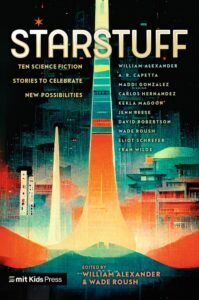
William Alexander and Wade Roush (eds), Starstuff: Ten Science Fiction Stories to Celebrate New Possibilities
(MIT Kids Press, May 20)
Recommended for ages 9-12
It can be tricky to find great science fiction written specifically for middle grade readers, but kids who pick up Starstuff will find ten excellent tales that authors of speculative fiction have dreamed up just for them. The stories in this anthology blend kids’ everyday concerns with otherworldly elements: What do you do when your parents are getting a divorce and an asteroid is speeding toward Earth? How should you behave when you arrange a trip to the mall with online friends and discover that one of them is possibly a robot? What’s it like to attend school on the Moon, or in the distant reaches of space? Acclaimed authors including Fran Wilde, Eliot Schrefer, and Kekla Magoon give young readers a wide-ranging and friendly introduction to the genre.
Lindsey Leavitt, The Garden Just Beyond
(Godwin Books, May 20)
Recommended for ages 10-14
For the wealthy, it’s a dream come true to travel to the New Jersey Pine Barrens and attend a dinner party hosted by the Gartner family on their ancestral estate. That’s because each dish cooked by a Gartner has a magic of its own, and diners know that one taste of the family’s famous recipes could literally change their lives. Fourteen-year-old Magnolia Gartner isn’t great at making small talk with the guests who pay to dine at the family table, but she can’t wait for the day when she’ll be allowed to cook her very first dinner and prove she’s just as talented as her relatives. At least, that’s what’s supposed to happen. This middle grade novel is quirky in the very best sense of the word, and Lindsey Leavitt’s writing is imaginative, wry, and full of heart.
Sarah Miller, Hick: The Trailblazing Journalist Who Captured Eleanor Roosevelt’s Heart
(Random House Studio, May 27)
Recommended for ages 12-17
Until I read this fascinating biography, I’d never heard of Lorena Hickok, but she was one of the best-known female reporters in the United States when she worked for the Associated Press in the 1920s and ’30s. In her role at the AP, Hick covered Eleanor Roosevelt during Franklin Delano Roosevelt’s first run for president, and the two women soon grew close. “Hick and Eleanor not only loved each other, but were in love with each other,” author Sarah Miller writes, and Hick traces the narrative of their powerful relationship, drawing on the correspondence that remains from the women’s records.
While the former First Lady is naturally an enormous part of Hick’s story, Miller takes readers through all the trials and escapades of Hick’s life: her traumatic upbringing, her determination to get an education, the challenges she faced as a lesbian in early 20th century America, and her work for the government traveling the country during the Great Depression and reporting on the struggles of everyday people.
A.A. Vacharat, This Moth Saw Brightness
(Dutton, May 27)
recommended for ages 14-17
I couldn’t stop reading this form-bending YA debut from author A. A. Vacharat. Told through traditional narrative, text messages, footnotes, suspicious-looking redacted documents, and more, This Moth Saw Brightness is mostly narrated by a high school student named ’Wayne Le (it’s pronounced with an “invisible D” at the start). ’Wayne’s immigrant father always seems to be disappointed in him (why can’t he be a genius like his friend Kermit?), so when ’Wayne is invited to prove himself as an asset to society by participating in a health study at nearby Johns Hopkins, he agrees to enroll. Jane, the origami champion ’Wayne silently adores, is part of the study, too. But what exactly is the study studying? This smart, original novel explores conspiracy theories, neurodivergence, and questions of identity and belonging.
Nova Ren Suma, Wake the Wild Creatures
(Little, Brown, May 6)
Recommended for ages 14 and up
Fans of Nova Ren Suma’s lyrical prose will be thrilled to see a new book from the bestselling author out this month. Wake the Wild Creatures begins on the night that thirteen-year-old Talia’s life changes forever. With her mother and a community of other women and children, she’s lived in an abandoned hotel high in the Catskills, hidden and protected from the outside world by a seemingly magical mist. But on the night that Talia is supposed to complete a rite of passage on the mountainside, she’s snatched from the woods by police officers, and her mother is arrested. By age sixteen, Talia is living uncomfortably with extended family, loathing the casual misogyny of the modern world and longing to return to her lost home. Talia’s narrative voice is strange, fresh, and captivating as it weaves between past and present.
